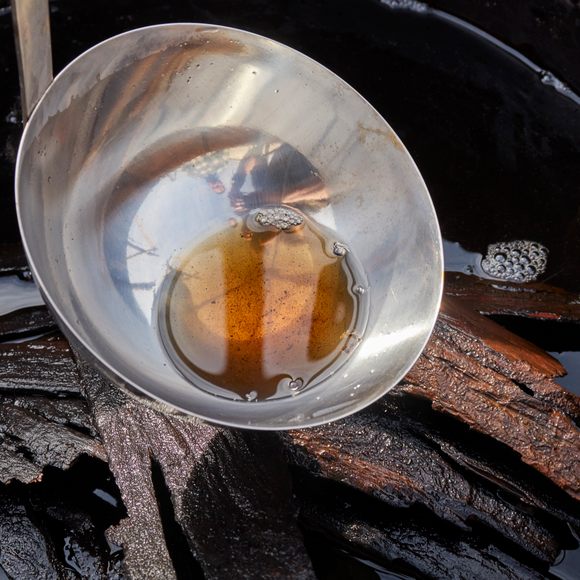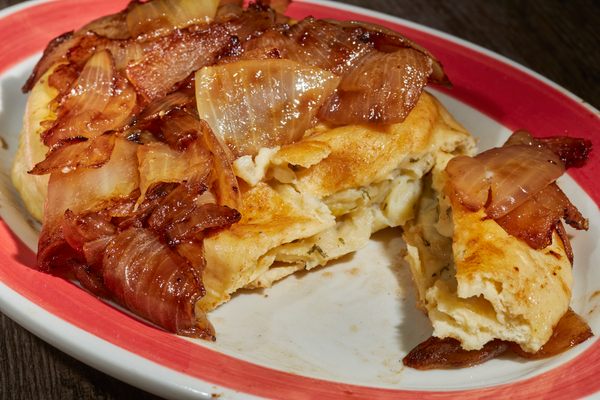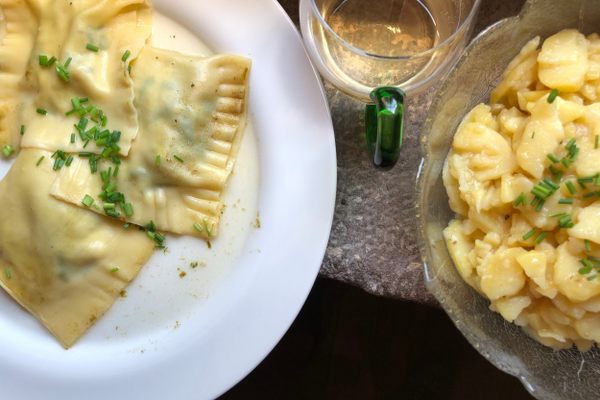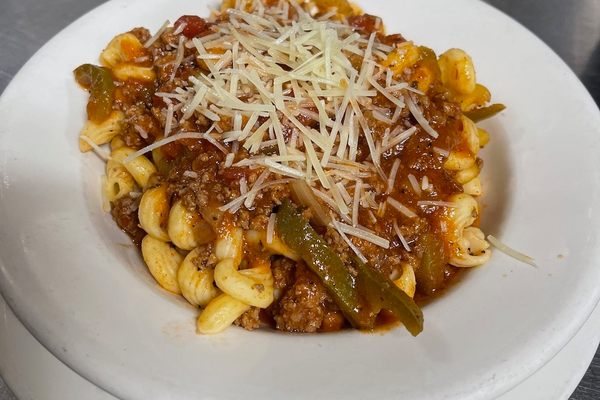Over the past few years, hickory syrup has begun to show up at farmer’s markets around the northeastern United States. Made from the bark of the shagbark hickory tree, it’s an intriguing alternative to maple syrup.
At Ox Dynasty Farms in Mifflintown, Pennsylvania, surrounded by the biggest oxen I’d ever seen, Doug Drewes presided over simmering pots of hickory bark. According to Drewes, the liquid he was cooking is called “tea.” Indeed, Joe Haber, a restaurateur and expert on local Native American food and culture, told me that the tea is a traditional medicine and tincture.
Some people claim that hickory syrup can be made without added sugar, but early inhabitants of the region drank the tea for the intense taste of hickory, and not its sweetness. When sugar became available, they were combined to make a sweet syrup.
It left me wondering if I could gather some hickory bark and whip up a batch. An hour of wandering through a local forest told me otherwise. In theory, you could peel the bark off living trees. In practice, getting enough to fill a pot wasn’t so easy. The correct trees already had their prime bark removed. Apparently, my neighbors already knew about hickory syrup and how to make it.
Instead, I decided to sample a bottle of Drewes’s syrup. The vanilla and cane sugar were the flavors that first hit me, soon followed by woody notes from the bark tea and a hint of caramel. The color, a grey-brown that matched the uncooked bark, served as a reminder of the syrup’s origins.
Written By
 brianY
brianY














